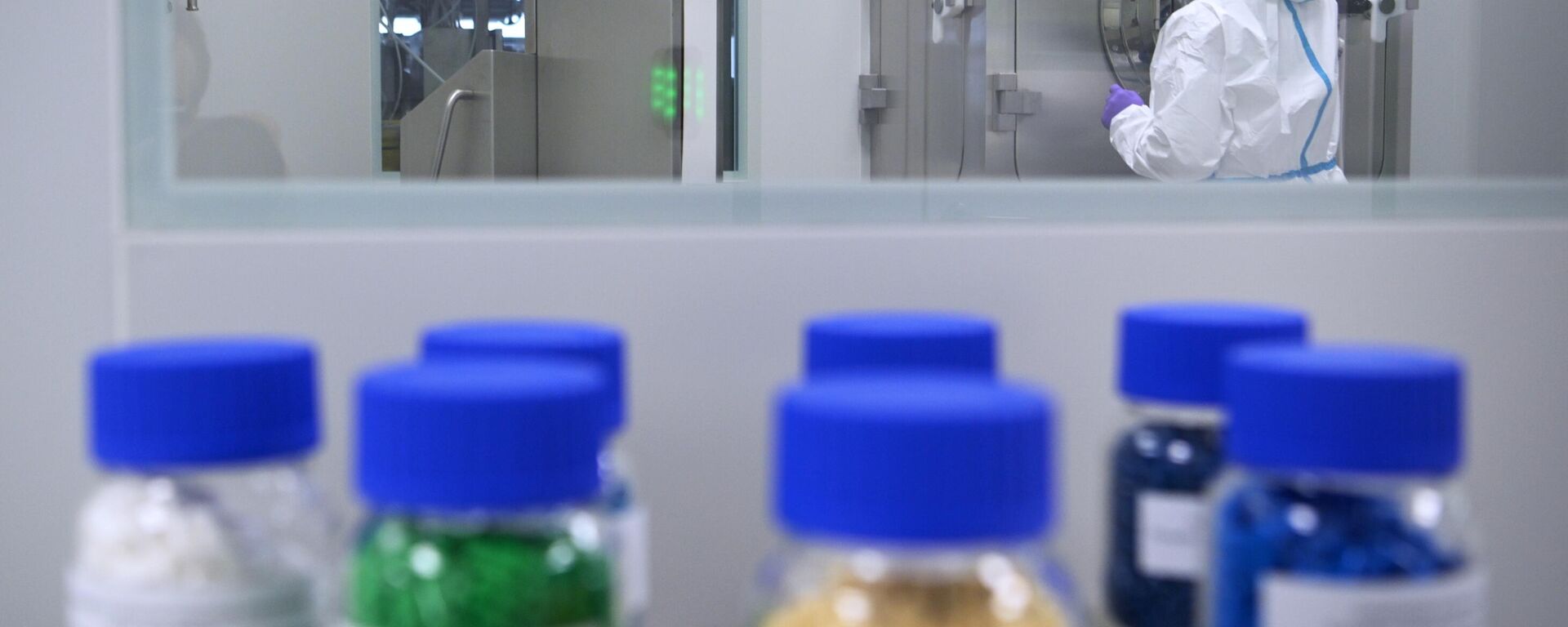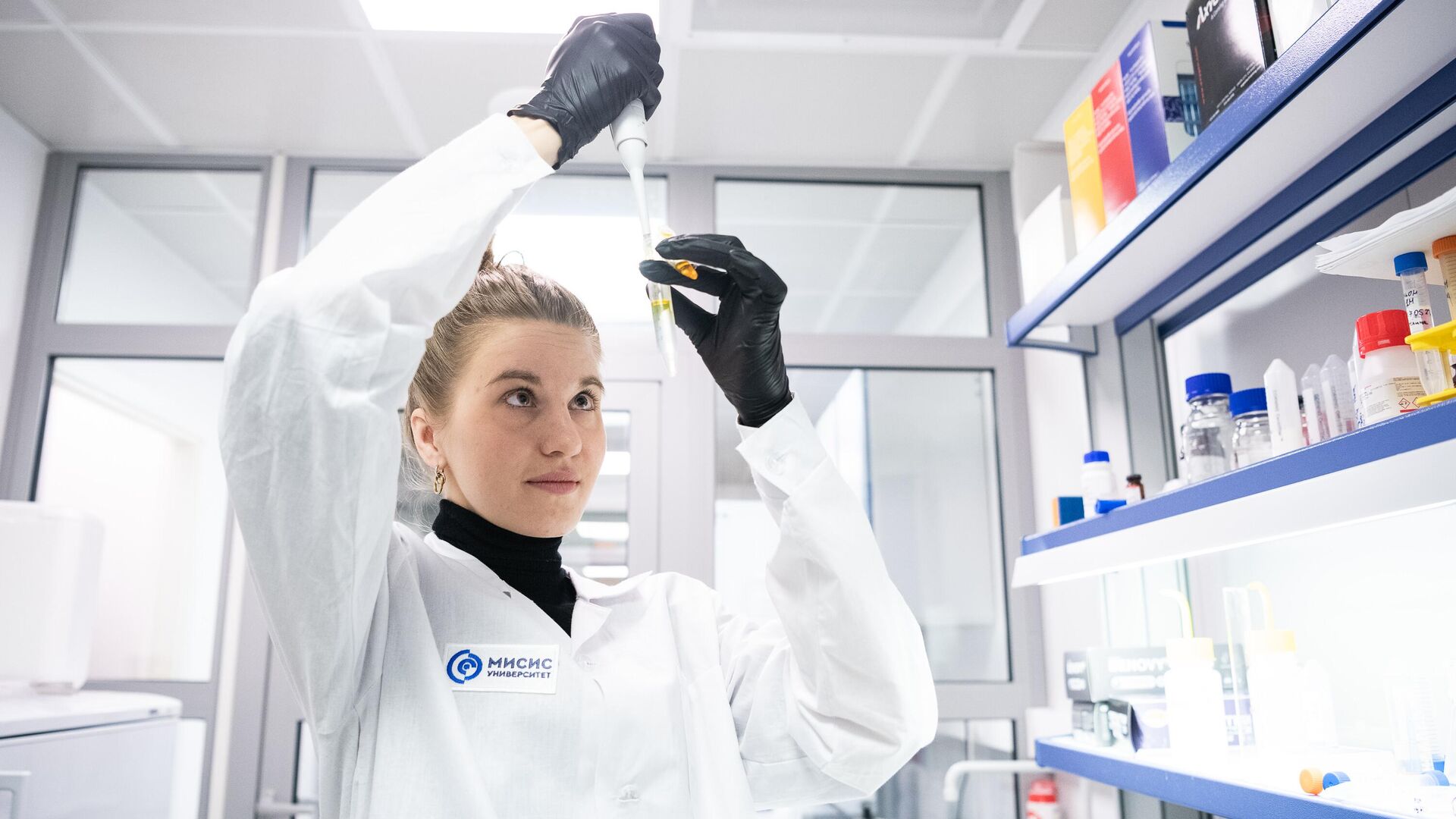https://sputnikglobe.com/20241105/scientists-develop-unique-nanosensor-for-diagnosing-cancer-and-alzheimers-disease-1120760777.html
Scientists Develop Unique Nanosensor for Diagnosing Cancer and Alzheimer’s Disease
Scientists Develop Unique Nanosensor for Diagnosing Cancer and Alzheimer’s Disease
Sputnik International
Researchers at the National University of Science and Technology MISIS have created a unique non-invasive nanosensor for measuring copper levels in the body in real time.
2024-11-05T04:47+0000
2024-11-05T04:47+0000
2024-11-05T04:47+0000
science & tech
russia
russian national university of science and technology (misis)
alevtina chernikova
beyond politics
https://cdn1.img.sputnikglobe.com/img/07e8/0b/03/1120760897_0:156:3000:1844_1920x0_80_0_0_705746deb069b67dbe9641abfcb87de8.jpg
The results were published in the journal Analytical Chemistry.Measuring copper levels in the body plays a crucial role in diagnosing and treating diseases related to copper metabolism disorders, such as Alzheimer’s disease, Wilson’s disease, Menkes syndrome, and various types of cancer. Additionally, accurately determining copper content is essential for assessing the effectiveness of new copper-containing drugs and studying their accumulation in body tissues, the researchers explained.NUST MISIS specialists have developed a universal, high-precision sensor capable of measuring physiological concentrations of copper in real time. It has been successfully used to determine copper content in various biological samples, ranging from individual cells to entire organs, the researchers reported. They stated that this development opens up new perspectives for diagnosing and monitoring diseases related to copper metabolism disorders.According to the scientists, the new sensor has several advantages over existing analogs: it is more accurate, provides real-time results, and makes the measurement process less invasive. The uniqueness of this development lies in the creation of the first nanoscale universal sensor capable of measuring in both microscopic objects sized 10-100 microns and in entire organs, the authors of the study explained. Other existing sensors were typically designed for specific tasks and were significantly larger, which severely limited their application, especially in biomedical research.He added that this development already enables more precise monitoring of copper levels in studies of diseases related to copper metabolism disorders.During the research, nanosized quartz capillaries modified with carbon, gold, and a special compound for specific copper binding were used. The detection principle is based on the electrochemical oxidation and reduction reaction of copper, recorded through cyclic voltammetry.The next step for the scientists is to integrate the sensor into a compact device designed for long-term monitoring of metals in living organisms.
https://sputnikglobe.com/20241009/russian-scientists-dish-up-post-op-nutrition-solution-to-help-cancer-patients-recover-1120470023.html
russia
Sputnik International
feedback@sputniknews.com
+74956456601
MIA „Rossiya Segodnya“
2024
Sputnik International
feedback@sputniknews.com
+74956456601
MIA „Rossiya Segodnya“
News
en_EN
Sputnik International
feedback@sputniknews.com
+74956456601
MIA „Rossiya Segodnya“
Sputnik International
feedback@sputniknews.com
+74956456601
MIA „Rossiya Segodnya“
russian science, nust misis, russia alzheimer, russia science cancer, russia misis, russian science under sanctions, russian research medicine
russian science, nust misis, russia alzheimer, russia science cancer, russia misis, russian science under sanctions, russian research medicine
Scientists Develop Unique Nanosensor for Diagnosing Cancer and Alzheimer’s Disease
Researchers at the National University of Science and Technology MISIS have created a unique non-invasive nanosensor for measuring copper levels in the body in real time. According to them, this opens up new possibilities for diagnosing and treating diseases such as Alzheimer’s and cancer.
The results
were published in the journal Analytical Chemistry.
Measuring copper levels in the body plays a crucial role in diagnosing and treating diseases related to copper metabolism disorders, such as Alzheimer’s disease, Wilson’s disease, Menkes syndrome, and
various types of cancer. Additionally, accurately determining copper content is essential for assessing the effectiveness of new copper-containing drugs and studying their accumulation in body tissues, the researchers explained.
NUST MISIS specialists have developed a universal, high-precision sensor capable of measuring physiological concentrations of copper in real time. It has been successfully used to determine copper content in various biological samples, ranging from individual cells to entire organs, the researchers reported. They stated that this development opens up new perspectives for diagnosing and monitoring diseases related to copper metabolism disorders.

9 October 2024, 06:30 GMT
According to the scientists, the new sensor has several advantages over existing analogs: it is more accurate, provides real-time results, and makes the measurement process less invasive. The uniqueness of this development lies in the creation of the first nanoscale universal sensor capable of measuring in both microscopic objects sized 10-100 microns and in entire organs, the authors of the study explained. Other existing sensors were typically designed for specific tasks and were significantly larger, which severely limited their application, especially in biomedical research.
"Previously, such studies required a large number of animals since the measurement procedure was invasive and necessitated tissue sample collection at multiple time points. The new sensor allows for multiple measurements on the same animals, significantly reducing the number of experimental animals needed and enhancing the accuracy and completeness of the obtained data," said Roman Timoshenko, an engineer at the scientific research laboratory of biophysics at NUST MISIS.
He added that this development already enables more precise monitoring of copper levels in studies of diseases related to copper metabolism disorders.
During the research, nanosized quartz capillaries modified with carbon, gold, and a special compound for specific copper binding were used. The detection principle is based on the electrochemical oxidation and reduction reaction of copper, recorded through cyclic voltammetry.
“The team of researchers at NUST MISIS, led by Candidate of Physical and Mathematical Sciences Alexander Yerofeev, has been working for several years on creating innovative technologies for medicine that will simplify the diagnosis and treatment of many diseases in the future - Alzheimer's, Wilson's disease, Menkes syndrome, and various types of cancer. The new high-precision sensor for measuring copper levels in the body developed by our scientists has several advantages over existing analogs: it is more accurate, less invasive, and provides quicker results,” said Alevtina Chernikova, rector of NUST MISIS.
The next step for the scientists is to integrate the sensor into a compact device designed for long-term monitoring of metals in living organisms.



